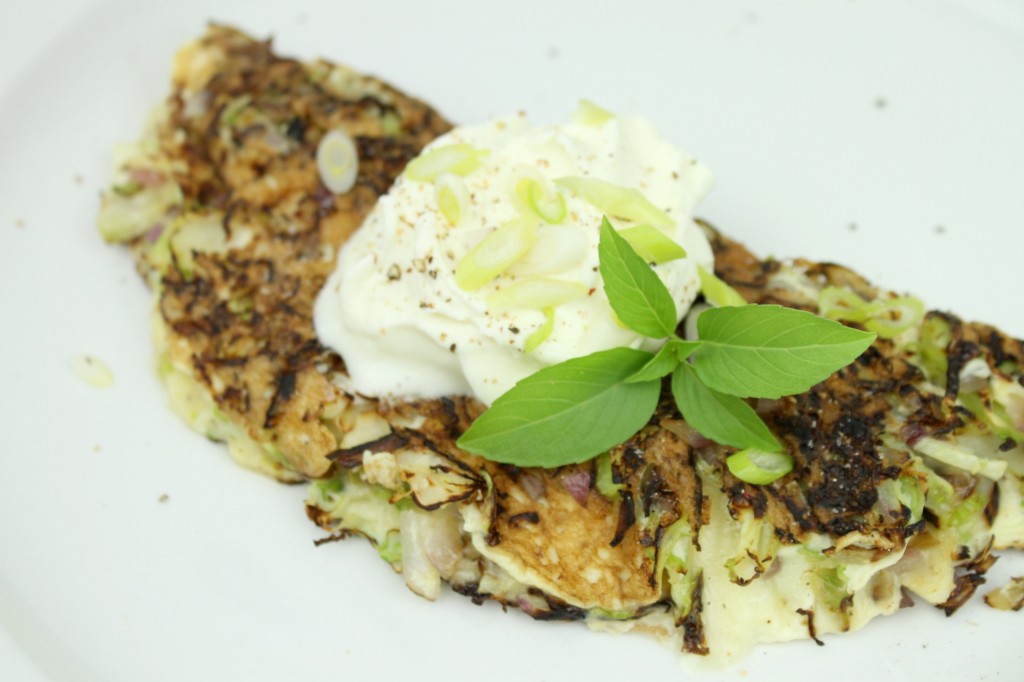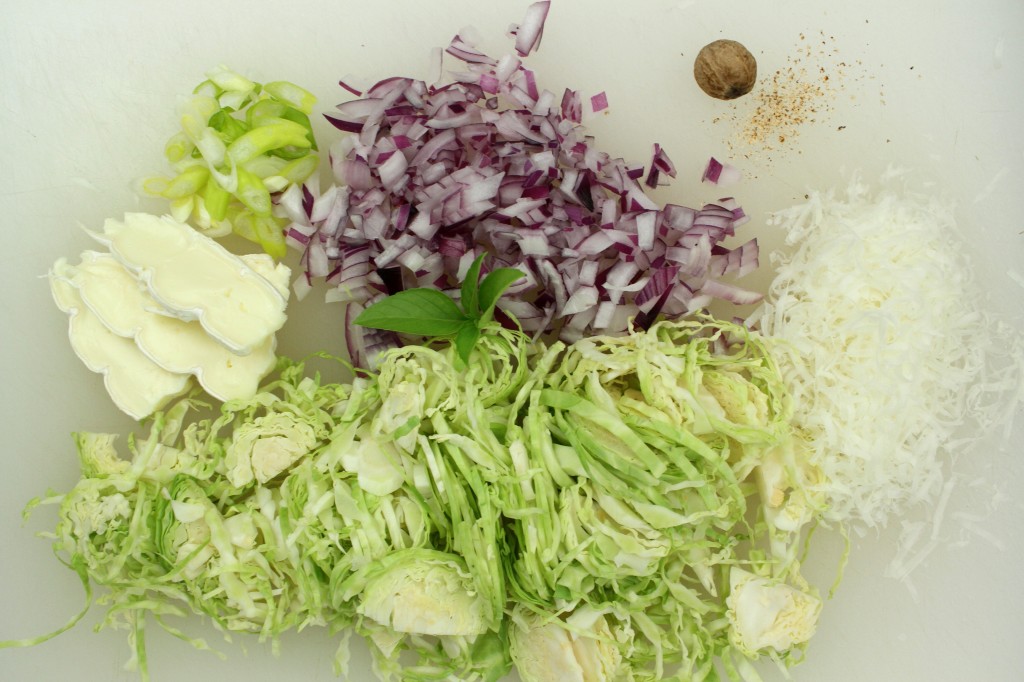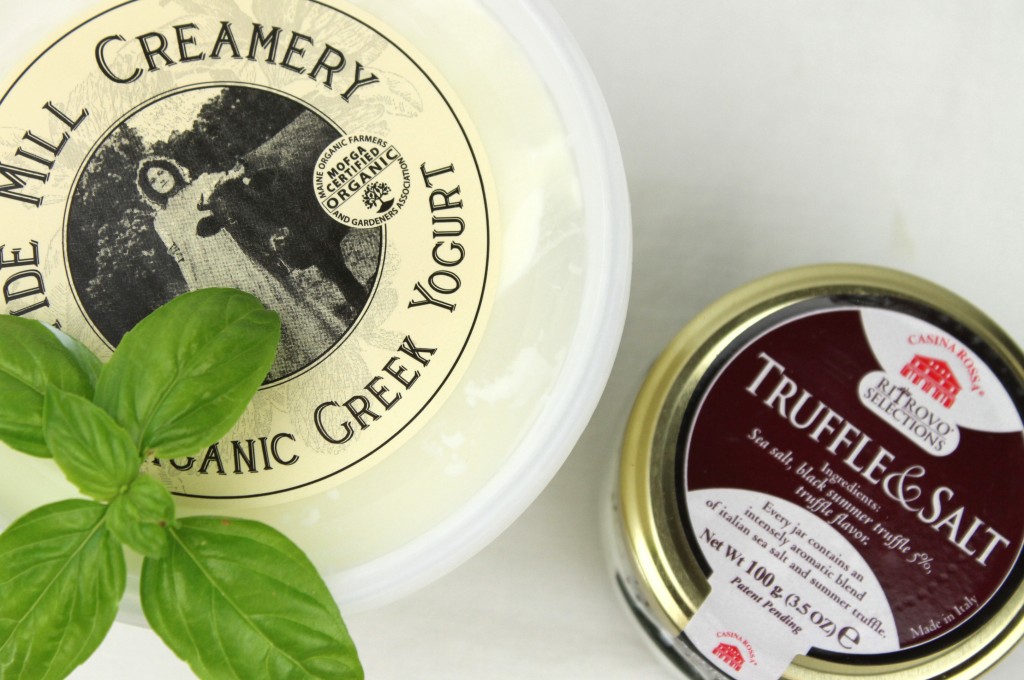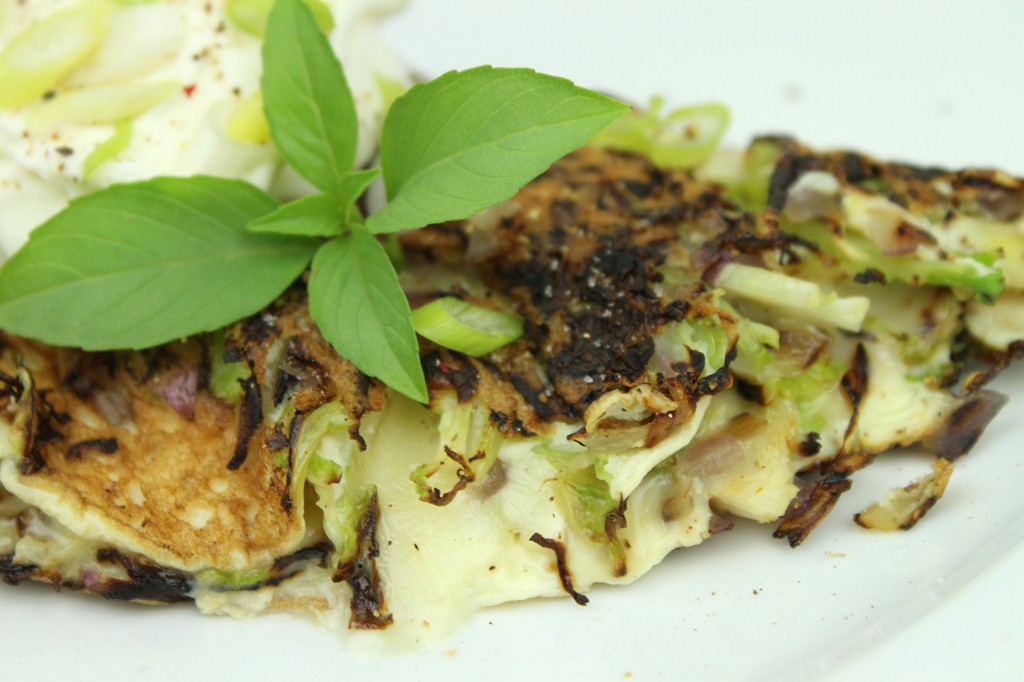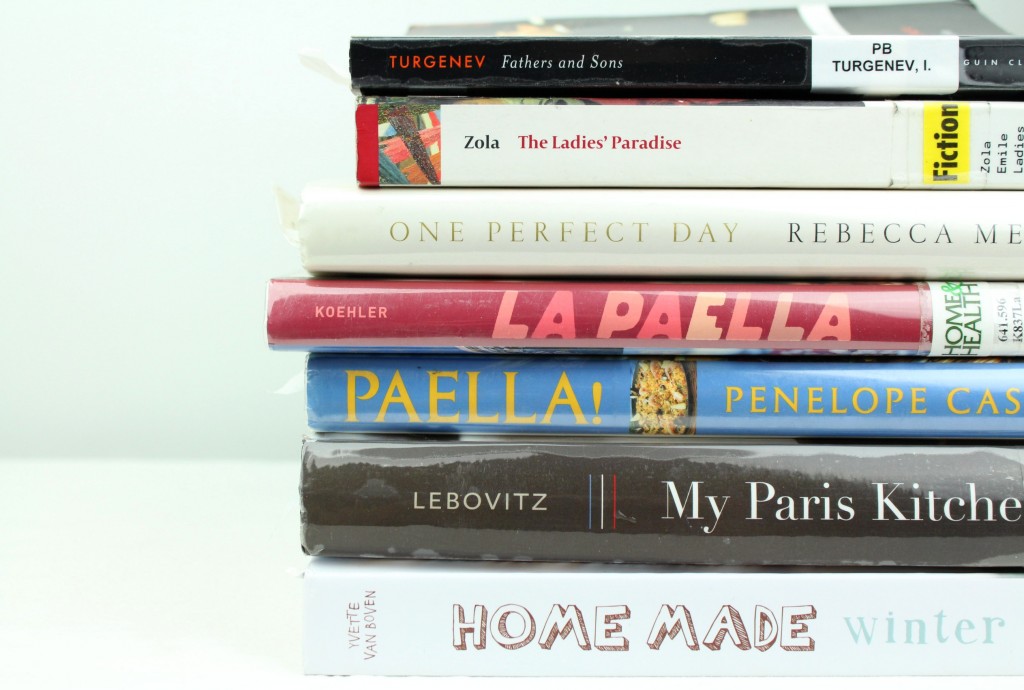OK, I love eggs, and I love eggs that have been manipulated into any shape that falls under the umbrella of omelette. This is not about omelette technique (whatever achieves the desired texture and the happiest family of ingredients for you that day, go for that) but about flavor.
Brussels sprouts, scallions, red onion, camembert, asiago, nutmeg
Whether a creamy French-style omelette, folded, rolled, stuffed, some combination of these, or something in frittatta territory, these principles apply. It doesn’t really matter what the other ingredients are, either. So, next time you are whipping up an omelette, try one or all of the following.
1. fresh herbs – My favorites are parsley, tarragon, chervil, basil, and thyme, but anything you like. Dill and cilantro can also be interesting. This is Thai basil. Any or all. I like to beat them in with the eggs as well as employing as garnish. Fresh over dried: fresh much, much better in this context.
2. pimentón – beat this into the eggs along with your salt and pepper (and herbs). Adds a little smoky kick. You can successfully add this to anything savory, incidentally, and many sweet things, too.
or
3. nutmeg – grate fresh (ideally) over as garnish or beat into the eggs. Use in moderation and your omelette will have an added richness without explicitly tasting of nutmeg (though explicit nutmeg can be good, too). Nutmeg is a true friend of eggs, and can be added virtually anywhere they are.
4. truffle salt – an excellent way to add a dark, creamy depth to the whole scenario. I tend to use it as a garnish rather than an internal element. Much preferred to truffle oil, which is all synthetic. I like this one. Also put on fries. Also put on any potato. Also put on pizza.
5. bonus cheese – Whatever cheese you are adding, add another one. It almost doesn’t matter which. In this example I have asiago and camembert. I use whatever I happen to have around. This is an easy way for the flavor to make a big jump in complexity, with the right cheese.
6. Greek yogurt – add a generous spoonful as a garnish. The tartness of the yogurt cuts the richness of the egg while the creaminess compliments and enhances the creaminess of the egg. Highly, highly recommended. As is the case with most ingredients, the better the yogurt, the better the final result. This Tide Mill Creamery yogurt is a wonderful organic one from Maine.
Good luck.
x


